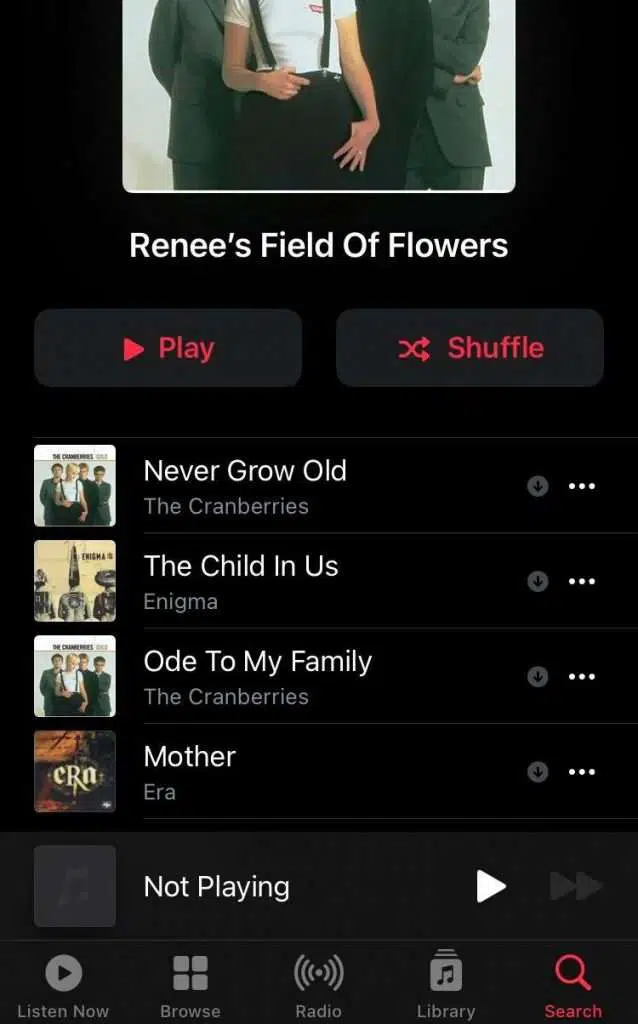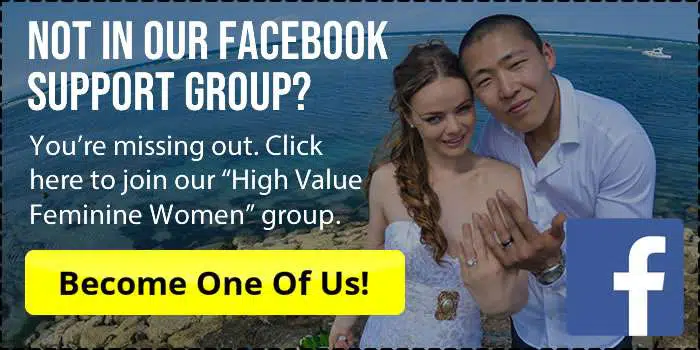You’ve already worked out that you have an anxious attachment style, and that’s great. That means that you have taken the first step towards healing anxious attachment.
The next step is to recognise your anxiety and preoccupation when you’re confronted with it in your adult relationships. Once you are consciously aware of it showing up and able to notice your own anxiety and preoccupation, you can then begin to self soothe anxious attachment.
As someone who struggled with anxious attachment for the first 21 years of my life, I can say that I am well aware of the despair it can cause, especially as a woman.
See, men and women can both have anxious attachment style. Yet there’s some evidence that men are more likely to report higher avoidant attachment whereas women are more likely to report higher ambivalence.
This comes at no surprise for me, as I suspected this to be true for a long time.
Although men also have anxious attachment, the anxiety seems so much more compounded for women, purely because women generally attach earlier than men do when dating.
Not only do they attach earlier, they are more needy of emotional closeness and reassurance than men are in the dating stages. This is because by default, men are more detached (until they fall in love).
So men’s sense of detachment magnifies a woman’s neediness, because it magnifies her need for reassurance and security.
Thus, when my husband and I met and started dating 16 years ago, I remember myself being literally consumed with worry when we had periods of less contact, or when he seemed more distant.
I vividly remember asking myself endlessly:
“Why do I need him so much more than he needs me?!”
Some people would tell me “well that’s not true”, but deep down inside I knew that it was true on some level (at least in the beginning).
He’s a man after all, and the masculine tends to be detached by default in their relationships. As such, it takes men longer to attach and to match a woman’s level of emotional attachment or “dependency”.
(Why is this important? It is because your core attachment style largely dictates and influences what happens in your relationship. Thus it’s imperative you understand your core attachment style!)
Table of Contents
You’ll Heal Anxious Attachment When You Have A BIG Reason To Do So
Over the last 15 years, I’ve managed to figure out how to move from anxious attachment to secure.
I was able to do it because I had something outside of myself that I loved enough, to make me change.
That ‘something’ started with my husband. I could no longer stand seeing the sadness in his eyes when he tried to reach me and bond with me (yet I was too preoccupied to meet him there).
Then, more than 8 years ago, I had my first child and that helped propel me to heal even faster. It’s like I had a chance to heal my own insecure attachment by learning to always be a dependable, responsive mother to them.
Not only did having my own children help me heal, the help of an intelligent, creative and committed husband allowed me the space to do so.
I can’t tell you how much my union with a securely attached man (hubby) helped to soothe and heal my anxious attachment. He now says in his own words “you’re not very anxiously attached anymore.”
This is the first part of a two part series on anxious attachment. You can read my other article about anxious attachment triggers and managing them for dating.
In this article, I will share with you how you can heal anxious attachment and why it’s very possible!
What Is Anxious Attachment
Anxious attachment (as I define it) is a default mode of heightened uncertainty that creates anxiety when you emotionally bond with, and get close to someone.
The official definition of anxious attachment from WebMD is: Anxious attachment is a type of insecure relationship that children have with mothers or caregivers. Having this attachment in childhood can affect your relationships later in life.
The key to focus on is that your anxious attachment style is magnified when you get closer to people.
If you’re not getting closer to people, then you can probably feel more in control, and your insecure attachment pattern will not be activated as much.
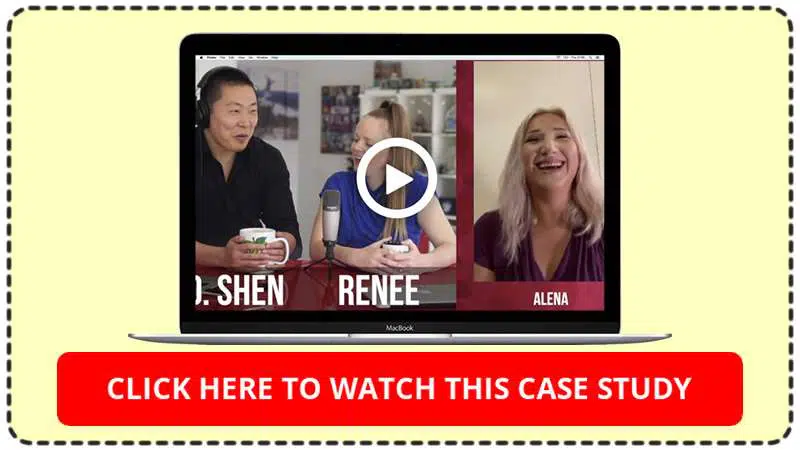
How To Cope With Anxious Attachment Style: Know This…
Know that if you have an anxious attachment style, then you will often relate to a romantic partner in a similar way that you related to your mother and/or father.
Related: The 4 Types Of Attachment Styles & Which One Is Yours?
You will run the same patterns of opening up or closing and the same patterns of getting closer to people or distancing yourself.
Which means that you always have to be open to the idea that the way you react to the things that happen with your boyfriend, husband or romantic partner don’t always reflect his intent and /or the severity of what he actually did.
You may feel a lot of anger at something your boyfriend did, but some of that anger may be old anger that you were unable to express towards your caretakers/mother and father.
This is one of the greatest challenges that I had in trying to heal and grow through having an anxious-avoidant attachment style.
I wrote here in my article on signs you have abandonment issues, that sometimes I’d have rage that came out of nowhere, unexpectedly.
Unfortunately, I admit that the anger came out at my husband in the past. It came out in a way that was disproportionate to what he did, and maybe it was not even warranted at all.
As an anxiously attached person you can become excessively angry and excessively vigilant, because your pattern is to perceive any sign of conflict with your partner as a threat. And that’s a threat to your safety in the relationship.
You could also view your partner’s healthy independence as a sign of impending doom, even though their independence is simply a sign of them having their own identity outside of the relationship, which is not only healthy, but desirable too.
Related: 10 Ultimate Signs Of A Healthy Relationship.
See, your mother was the place you learned how to interact and relate to another human (or not). This is where your blueprint for interacting in a close relationship was created.
As such, you can’t really expect yourself to interact a whole lot differently than how you were conditioned to interact by your caregivers.
So, go easy on yourself, but also be very aware of the way your actions appear to others in your relationships.
Healing Anxious Attachment Style: You Must Have An Adjustment Period First
…And a grieving period.
You see, people with an anxious attachment style have a feeling deep down inside that they are not worthy.
Hard for most to accept, but it’s true.
This lack of worthiness and lack of self esteem came about because as a baby you had emotional needs, and those needs were either not met (or half-met), condemned or ignored.
So you learned very young that your needs for attachment, warmth and love were ugly and bad.
You essentially learned that you’re not worthy enough to be cared for and responded to.
Because of this, you had anger and fear that have been building up for decades, due to emotional abandonment from your mother and father. Not to mention the shame that you harbour deep down inside.
Robert Karen, PH.D. says in his book ‘Becoming Attached’:
“The child whose needs are not met, who feels ineffective in his efforts, or who, worse, is rejected or put down in various ways, according to Bowlby, builds up a negative set of assumptions about himself. He is not worthy of love or respect. He is, in effect, ashamed of what he is.”
I was separated from my mother at birth and put into foster care, then transferred to a seemingly “normal” couple who couldn’t have children.
While they had the money to put food on the table and send me to private school, my needs for attachment were often met with gaslighting, heavy handed abuse and/or nonchalance.
Nonchalance came from my father (who was against adopting a child, but felt forced into it by my adopted mother), and abuse from my mother.
It took me a long time to understand why I felt like my whole existence was shameful. Of course, my feelings of shame were probably exaggerated because of my adoption and the abuse from my mother.
You may not have been adopted, but just have anxious attachment. So your feelings of shame will exist, but maybe not to the extent that mine did.
So not every person with anxious attachment would have such a level of shame, but every person with anxious attachment harbours shame on some level.
By the way, people who are securely attached almost never feel shame. This was also hard for me to understand.
My securely attached husband, who was one big instigator of my healing, has never ever felt shame. Ever.
I mean, I couldn’t believe it. A lot of anxiously attached people feel shame for having emotional needs.
For me, that has now disappeared after 15 years of healing, and I believe it can disappear for anybody with the right environment.
Bottom line:
Anxiously attached people naturally have more anger, fear and shame. This anger and shame needs to be grieved and felt through before it destroys your partner’s trust in you.
Because if it is not grieved, it will always come out towards your partners (and even friends) in disproportionate amounts.
So this is the most critical part of learning to heal anxious attachment style and self soothe anxious attachment.
Grieve old anger, hurt and shame first. Although you were emotionally abandoned by those who were supposed to love you, you cannot – and must not – abandon yourself now.
You should perhaps also figure out if you have abandonment issues. You can do this by learning the signs that you have fear of abandonment.
How to Grieve The Loss Of A Secure Attachment
In order to grieve, you need to take the time to acknowledge the presence of five important emotions that consistently come up for people with anxious attachment.
Here are the five main emotions that come up (whether you want to acknowledge it or not, they are lurking around somewhere):
- Dread
- Anger
- Hurt
- Sadness
- Shame
These are the five emotions that you need to acknowledge and give space to, because what you resist persists.
If you don’t take responsibility for working through them, it’s likely that no one else will, and you will pay the price in your relationships.
So go ahead and ask someone you trust to listen to you and sit with you while you try to process these emotions.
How To Self Regulate by Releasing Old Emotions First
If you don’t have anyone you can trust, you can use a journal to help you process and grieve these emotions. Or just use old photo and video memories of your mother and father to help bring up these emotions and relive the repressed memories.
You can also use movies to help you process and connect with old anger over abandonment.
Why would you want to do that? Because it gives your body and mind something to connect to and share your feelings of anger with.
Doing it with a movie scene is good because you’re actively resonating with another human feeling the feelings of hurt that you felt (and it feels as though they also resonate with you).
All it needs to be is one scene from a movie to help you access a certain emotion and release it. It doesn’t have to be a scene between a mother and daughter or parent and child, all it has to do is help you access old emotions related to being sad, angry, hurt or abandoned.
All we’re aiming for here is the cathartic process of releasing old emotions.
Now, I cannot guarantee that these movie scenes are the best examples because everyone is different, and you will have to find your own. But here’s some suggestions of movie scenes to get you started:
In the movie Interstellar, her dad has to leave to finish his mission and his daughter pleads with him not to go…
In the movie Closer, Alice and Dan are breaking up, and Natalie Portman is angry that she was never really able to feel his love.
Why Should You Grieve Horrible Events?
You should always grieve. Without grieving, you can’t renew yourself and escape the prison of insecure attachment created by childhood neglect and trauma. Much less can you change anxious attachment style.
Grieving allows you to be free and emotionally empty. Being empty helps you calibrate your emotions so that you don’t have unbalanced outbursts of anger and become crippled by shame or dread.
Recommended: Why Do I Get Attached So Easily? 6 Exact Reasons & How To Stop.
How To Self Soothe Anxious Attachment: 2 Ways
We already established in the beginning of this article that in order to self soothe anxious attachment, first you need to become aware of the anxiety when it comes up.
You need to notice your fears and catch them when they come up. This is the most important time, because it’s really the only moment in which you can help yourself and make a change.
I’ve also written an article on why your fear of abandonment can make you more beautiful. You can read that here.
After this, there are two main ways you can self soothe anxious attachment. Let’s look into these two ways now…
1: Find Anchors Of Secure Attachment And Go To Them Regularly.
These are highly personal, and they need to be so that they work for you.
Basically you find movie scenes, songs, or meditation tracks that represent emotional safety for you.
An example from my own life: my own field of flowers….
I came up with a visualisation whereby both of my biological parents were playing with me in a vast field of flowers. We were playing tag, and they were both over the moon to be playing with me and to have me as their daughter.
This was a field of flowers where they were happily married and couldn’t wait to share their love with me. (Visualising their union really helped me to feel what a secure ‘base’ would have felt like for me as a baby and young child.)
(Such a union between them would not have happened in a million years if you know my story), but that doesn’t matter. What matters is that it changed my emotional state and allowed me to feel emotionally safe.
This visual of having a secure base was so therapeutic, because it is what every single baby deserves, and it is what every single human needs in order to grow into a securely attached adult.
You and I may not have had that, so we have to work towards earned secure attachment, and there’s nothing wrong with that. You should be proud of yourself for working to learn to self soothe and calibrate.
One day I shared my field of flowers visualisation/anchor with hubby, and here’s what he did to cement this further in my life…the day after I shared this with him, I found this playlist on my phone (all songs that are perfect for meditations and visualisations to create anchors of secure attachment).
You may want to look up these songs and use them too if you haven’t already…
2: Become Your Own Mother: Develop Your Own Maternal Voice.
…and speak to yourself through this voice.
This is one thing I have found that really works when you want to achieve earned secure attachment.
I came up with this strategy one day when I was so beside myself with panic and felt I had no way out. When you experience deep anxiety, it really feels kind of like you’re trapped in the prison of your own emotions and body – and you cannot get out.
It goes around in circles and cripples your ability to function as a normal human being.
I’ve used it in the past when I kept overthinking and stressing when someone didn’t reply to my text, and also when I had terrible insomnia (insomnia that was so bad I thought the lack of sleep would eventually kill me).
Related: How Do You Stay Calm When He Doesn’t Text Back? 4 Steps To Stay Calm & High Value.
Here’s how you do it: you imagine the most maternal mother you possibly can, then you visualise her actions and take on her voice to speak to yourself when you are preoccupied with fear.
Here are some things you can say to yourself with her voice when you are feeling worried and cannot escape those feelings…these mantras will help you become your own mother.
Self Regulation Mantras To Use When Healing Anxious Attachment
“It’s ok [insert your name], you are perfect as you are, and I love you.”
“I know you’re frightened right now [insert your name], but you will be ok.”
You should use these mantras whenever you notice yourself falling into the trap of clinginess or even when you find yourself unable to be vulnerable and feel.
See, anxiously attached people often think they’re being vulnerable when they’re not. So people with anxious attachment usually feel vulnerable inside, because they feel so out of control, but ironically they don’t always look vulnerable to others, especially men.
If you’re worried about not knowing how to be vulnerable, I have a guide on that. I also have an article on high value vulnerability here.
By the way, being your own mother also gives you back your own maternal nature, which is important because if you were raised by a woman who wasn’t maternal, that can sometimes rob you of your own potential to be maternal.
Genius isn’t it?
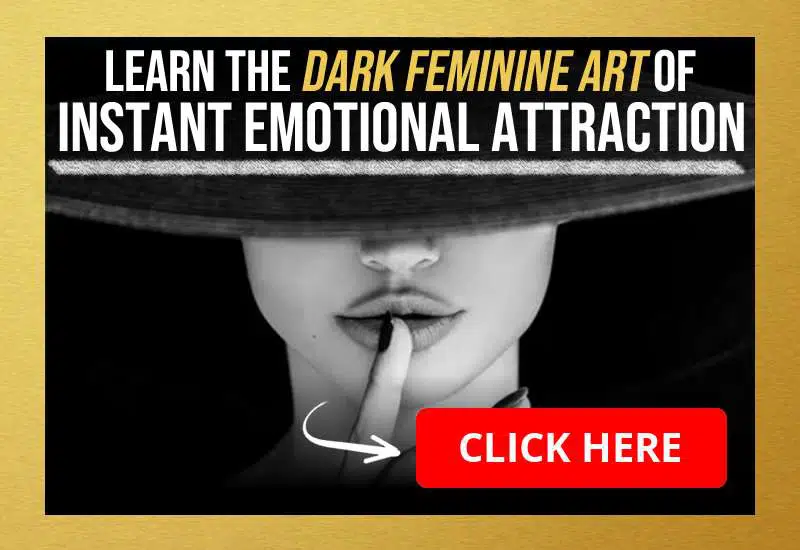
Now here’s something else to keep in mind…
If You Have Anxious Attachment, You’re Probably Also Avoidant.
Here’s something that took me years to realize:
If you have anxious attachment, then you likely also have some form of avoidant attachment too. This is what they call anxious avoidant attachment style.
Why is this?
Because anxiousness and worry takes up a lot of available energy in your body.
When you have preoccupied attachment or anxious attachment style, you are by definition using your energetic resources on anxiety and stress, over bonding and connection.
See, this cannot be sustained for the long term. So what happens is, you swing the pendulum from being hyper-vigilant and scared in a relationship to shutting off from connection altogether.
By being hyper-vigilant around the clock, you are actively avoiding emotional closeness, because you’re avoiding attunement.
Securely attached people do not use their energy to worry. They use their energy on attunement.
If you’re healing anxious attachment, then you need to keep this in mind, because being avoidant comes at a huge cost in your relationships. Without attunement, you have no relationship.
Additionally, you need to be aware that your partner, especially if they have secure attachment, probably feels you are a ‘cold’ person at times.
MORE: Avoidant Attachment: Causes & 8 Signs You Have It.
Be Aware Of Being Cold
Avoidant people will come across as cold and unsympathetic at times, and so it pays for you to try to zoom out and assess how your actions may look to your lover.
Avoidant people don’t feel at home in bonding, and to be fair, they probably haven’t their entire life. So they don’t think anything of it when they don’t feel comfortable hugging and cuddling people.
For them, not hugging someone feels safer. For them, distancing themselves physically and emotionally feels a lot more like ‘love’ and ‘safety’ than hugging and bonding would.
Similarly, they don’t think it’s unusual to suddenly ignore their loved ones or give their partner the silent treatment.
So if you have anxious attachment, beware that you are probably also manifesting some avoidant behaviours, and try to self-regulate this.
How do you do that?
Here Are Two Steps To Healing Anxious Avoidant Behaviours:
- Force yourself to hug your family, boyfriend and friends. Relax into the hug.
- Practise relaxing every fibre of your body when interacting with your loved ones.
Avoidant people tend to be quite stiff, especially when they are being asked to connect, bond and be intimate. If you don’t change this ‘stiffness’, then you can never have hope to truly change your attachment style to a more secure one.
Remember Your Feminine Bias For Early Attachment!
…And use it to your advantage.
Remember above when I shared that as a woman you naturally attach earlier than men?
I recommend you acknowledge that you will attach early to a man (earlier than he does), and that there’s nothing wrong with this, if you can use it to add more value and make him fall for you harder.
This feminine bias for early attachment is something all women go through, but some women completely push a man away with this early attachment, when they don’t have to.
Instead, would you like to learn how to use your feminine bias for early attachment to create deeper attraction with a guy and make him fall deeply in love with you? CLICK HERE to check out our online course “High Value Attachment”.
(The promise of this course is to help you to use your innate feminine bias for early attachment to create deeper attraction with men and inspire a deeper commitment from him without you looking needy and low value).
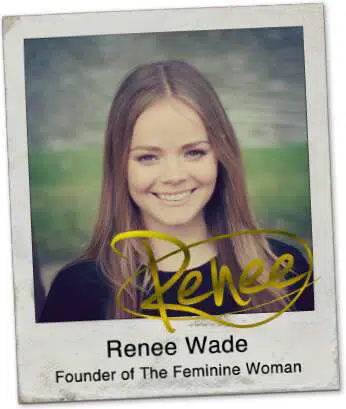
P.S. CLICK HERE to check out my full article archives! Or you may greatly benefit from one of our highly popular paid programs, CLICK HERE to see what we offer right now.
If you want to be supported by a warm community of high value feminine women, then join our Facebook Group. (It’s free and so incredibly valuable!) CLICK HERE TO join thousands of other women in our “High Value Feminine Women” Community.
By the way, while you’re at it, connect with me on social media.
- Here’s my Youtube Channel The Feminine Woman.
- Here’s The Feminine Woman Facebook page…
- Here’s my Instagram Pages TheFeminineWoman & My Personal Instagram.
P.S. CLICK HERE to check out my full article archives! Or you may greatly benefit from one of our highly popular paid programs, CLICK HERE to see what we offer right now.
If you want to be supported by a warm community of high value feminine women, then join our Facebook Group. (It’s free and so incredibly valuable!) CLICK HERE TO join thousands of other women in our “High Value Feminine Women” Community.
By the way, while you’re at it, connect with me on social media.
- Here’s my Youtube Channel The Feminine Woman.
- Here’s The Feminine Woman Facebook page…
- Here’s my Instagram Pages TheFeminineWoman & My Personal Instagram.

Renee is the founder of The Feminine Woman & co-founder of Shen Wade Media where we teach women how to show up as a high value high status woman whom easily inspires a deep sense of emotional commitment from her chosen man. Together with her husband D. Shen at Commitment Triggers blog, they have positively influenced the lives of over 15 million women through their free articles and videos as well as 10’s of thousands through paid programs through the Shen Wade Media platform.
Connect deeper with her work through the social media links below.


